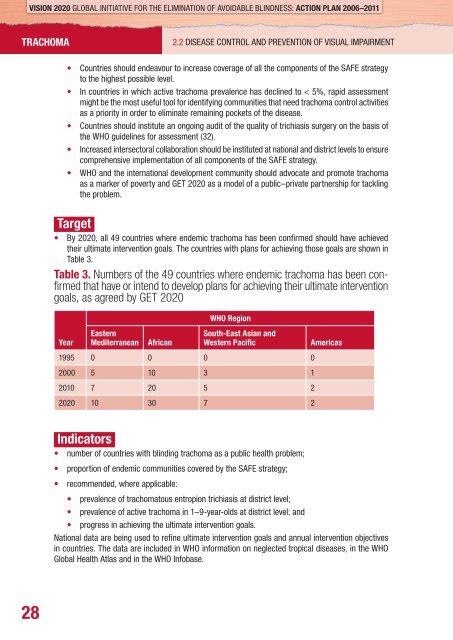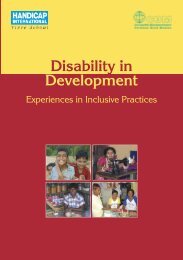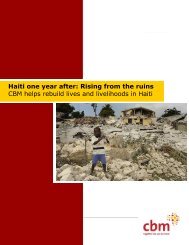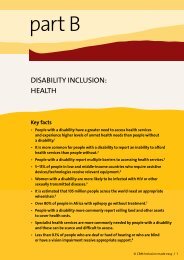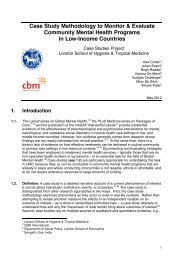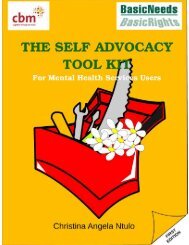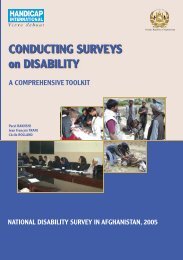Vision 2020 - World Health Organization
Vision 2020 - World Health Organization
Vision 2020 - World Health Organization
Create successful ePaper yourself
Turn your PDF publications into a flip-book with our unique Google optimized e-Paper software.
VISION <strong>2020</strong> GLOBAL INITIATIVE FOR THE ELIMINATION OF AVOIDABLE BLINDNESS: ACTION PLAN 2006–2011<br />
TRACHOMA<br />
2.2 DISEASE CONTROL AND PREVENTION OF VISUAL IMPAIRMENT<br />
• Countries should endeavour to increase coverage of all the components of the SAFE strategy<br />
to the highest possible level.<br />
• In countries in which active trachoma prevalence has declined to < 5%, rapid assessment<br />
might be the most useful tool for identifying communities that need trachoma control activities<br />
as a priority in order to eliminate remaining pockets of the disease.<br />
• Countries should institute an ongoing audit of the quality of trichiasis surgery on the basis of<br />
the WHO guidelines for assessment (32).<br />
• Increased intersectoral collaboration should be instituted at national and district levels to ensure<br />
comprehensive implementation of all components of the SAFE strategy.<br />
• WHO and the international development community should advocate and promote trachoma<br />
as a marker of poverty and GET <strong>2020</strong> as a model of a public–private partnership for tackling<br />
the problem.<br />
Target<br />
• By <strong>2020</strong>, all 49 countries where endemic trachoma has been confi rmed should have achieved<br />
their ultimate intervention goals. The countries with plans for achieving those goals are shown in<br />
Table 3.<br />
Table 3. Numbers of the 49 countries where endemic trachoma has been confi<br />
rmed that have or intend to develop plans for achieving their ultimate intervention<br />
goals, as agreed by GET <strong>2020</strong><br />
Year<br />
Eastern<br />
Mediterranean<br />
African<br />
WHO Region<br />
South-East Asian and<br />
Western Pacific<br />
1995 0 0 0 0<br />
2000 5 10 3 1<br />
2010 7 20 5 2<br />
<strong>2020</strong> 10 30 7 2<br />
Americas<br />
Indicators<br />
• number of countries with blinding trachoma as a public health problem;<br />
• proportion of endemic communities covered by the SAFE strategy;<br />
• recommended, where applicable:<br />
• prevalence of trachomatous entropion trichiasis at district level;<br />
• prevalence of active trachoma in 1–9-year-olds at district level; and<br />
• progress in achieving the ultimate intervention goals.<br />
National data are being used to refi ne ultimate intervention goals and annual intervention objectives<br />
in countries. The data are included in WHO information on neglected tropical diseases, in the WHO<br />
Global <strong>Health</strong> Atlas and in the WHO Infobase.<br />
28


